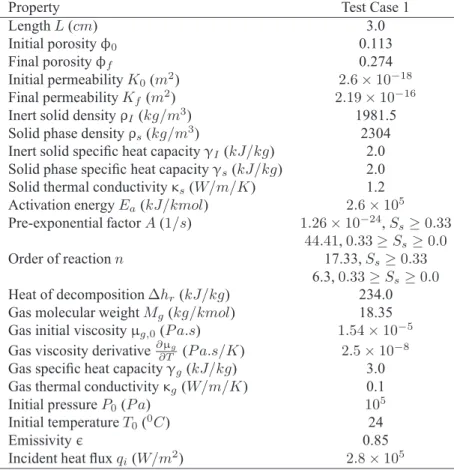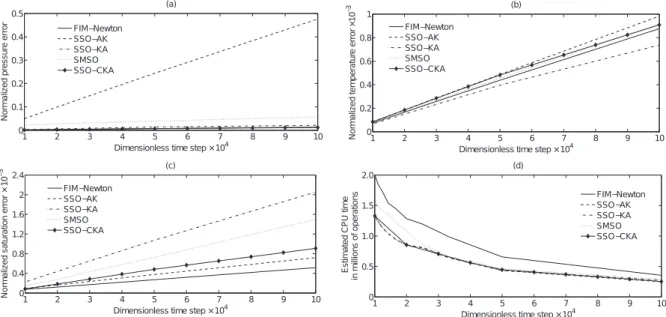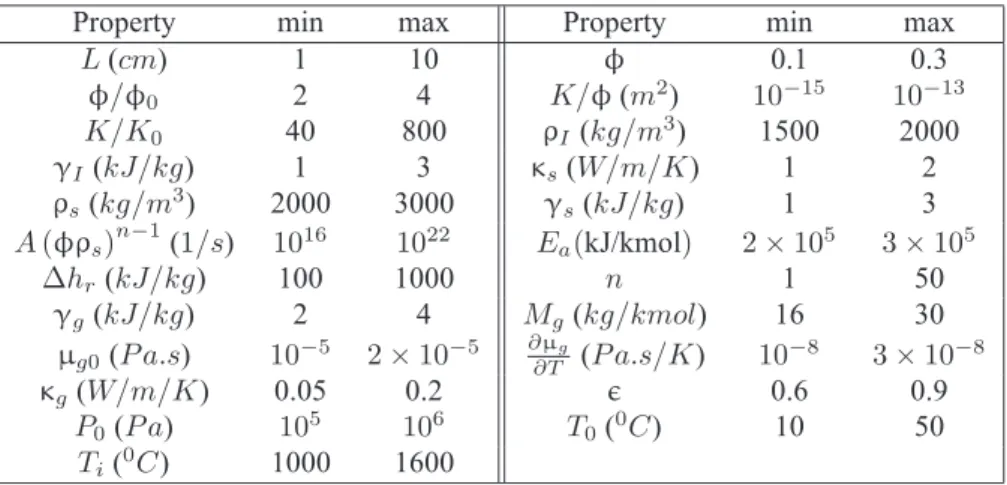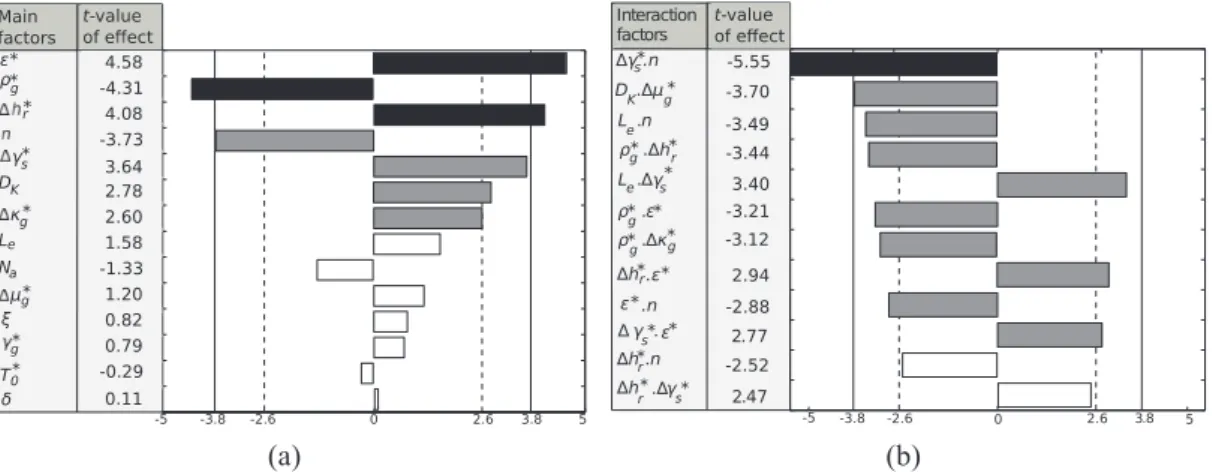Modelling Heat and Mass Transfer in Porous Material during Pyrolysis using Operator Splitting and Dimensionless Analysis
Texte intégral
Figure
![Fig. 1 Model for thermal decomposition of polymer composite as represented in Henderson and Wiecek ex- ex-periment [11]](https://thumb-eu.123doks.com/thumbv2/123doknet/3275871.93980/4.892.191.696.91.281/thermal-decomposition-polymer-composite-represented-henderson-wiecek-periment.webp)



Documents relatifs
The function that describes the Compton wavelength intersects the line identifying the radius of the black hole at a precise point; but, as explained above, in the area below the ray
specific heat contains contributions not only from the strongly coupled levels which are observed in phonon scattering experiments but also from more weakly coupled levels..
Throughout this paper, we shall use the following notations: N denotes the set of the positive integers, π( x ) denotes the number of the prime numbers not exceeding x, and p i
In this paper, we investigate the gap between the final true functional size of a piece of software at project closure and the functional size estimated much earlier
This has already been succesfully applied to the second order formula- tion of the acoustic wave equation and we focus here on the first order formulation of acoustic and
The predicted covariance structure depends on the readout parameters, and in particular on the temporal integration window w and typical number of neurons K used in the formation of
The discretization method uses a Crouch-Grossman integrator that pro- ceeds in two stages: first freezing the velocity vector field at the beginning of the time step, and then solve
In our case, though the initial equation is linear, the splitting propagator can be viewed as a non-linear function of the infinite dimensional operators − ∆ and V , and we


